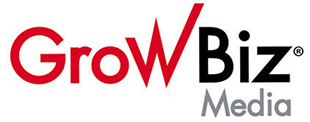I came across Abhishek Ghosh’s article in Thrive Global where he wrote: “It is the responsibility of everyone to promote [DE&I], especially the leadership. Just like any other process or policy, leadership support and involvement is necessary for DE&I initiatives to be successful.” But where do you begin: on one hand you want to cultivate a nurturing workforce, but on the other you want to attract underrepresented talent, without tokenizing existing employees. That’s the chicken and egg problem. It’s tough for businesses to be attractive to candidates from underrepresented sectors until your team is diverse. But, it is very difficult to attract underrepresented talent on your team until you have proven and demonstrated commitment to workforce diversity. And even when your team includes underrepresented employees, perhaps the company culture is not yet belonging-oriented enough.
As the CEO of Joonko, a company that works on solving this exact problem, I’ve seen many companies face – and solve – this issue. It’s not a one-time fix, but rather an ongoing, committed effort in order to achieve improvement.
Here’s how they do it.
1. Get the lay of your land.
The first step to solve the chicken/egg problem is to identify where you’re falling short and develop a plan to patch those gaps. The most important thing you can do is map out and examine your employees cross-sectionally to note how many represent underrepresented backgrounds and what positions they hold.
You might find that you do have employees from underrepresented backgrounds, but that many of them are at junior levels, or that they’re all clustered in a single team. That’s a problem, but it’s a fixable one such as putting in place mentorship programs to grow and cultivate talent internally. And it’s one you can’t address until you know you have it.
If you’re serious about introducing more underrepresented employees to your company, you have to know where you stand to start. From there, you can begin implementing tailor-made strategies that will help your company succeed.
2. Commit to human and machine unconscious bias training.
This is a tricky one that nobody likes to hear, but the next step to becoming attractive to underrepresented candidates is to have unconscious bias training. Everyone has biases – it’s just part of being human. Pretending we don’t isn’t helpful. Finding them and working to remove them is.
Human biases are present, but it’s also probable that many potential future employees aren’t even making it to the interview stage. Especially relevant during today’s talent shortage is this study co-authored by Joseph B. Fuller, co-chair of the Managing the Future of Work project at Harvard Business School.
“[T]here is a ‘hidden’ workforce of 27 million people in the U.S. who would gladly, and capably, fill those jobs — if given the chance. But because of hiring practices, the applications of this diverse group usually go straight to the rejection pile,” writes Christina Pazzanese in her interview with Fuller on the study. Why are they excluded? For multiple reasons that don’t actually disqualify them from being ideal employees, including felonies, lack of a degree, long gap between employment, or simply because their resumes don’t match keywords. This compounds the diversity issue as these issues intersect with different backgrounds.
Unconscious bias training can help both at the pre-interview- and interview level to ensure your hiring process is accessible and attractive to underrepresented candidates.
3. Rely on (the right) technology.
Part of the reason employers rely on technology is to stem the flow of candidates. Especially for many larger companies, it’s impossible to manually review each and every resume on the pile. Hiring processes have evolved to incorporate AI and other technology where possible to ease that burden and help humans make better decisions.
However, those hiring processes may cause unintentional exclusion as the report I mentioned above found. Using technology can be a pitfall that will hold your company back from attracting and hiring candidates from underrepresented backgrounds, especially nowadays, during the escalating war over talent.
At Joonko, we developed one particularly effective strategy we call the silver-medalist approach. For every candidate who gets hired, there are potentially tens that almost had all the right qualifications, but didn’t get the job because the employer wanted two employees, not twenty. That’s how we ensure our clients have a pipeline of exceptionally qualified candidates from underrepresented backgrounds. Our database has over 120,000 candidates who have been vetted at multiple stages by partner companies.
Technology is the only way you can make your hiring process inclusive and accessible, and importantly scalable, most especially as the pandemic means many companies are still hiring remotely. However, it’s important to ensure the technological tools you rely on are set up to help you succeed, not give you more work or lean into existing biases.
4. Update your recruitment paradigms.
Talent can be scarce to find, for the reasons I’ve outlined above and more. However, many companies who are hiring haven’t updated their hiring models in too long may find it even harder. That’s because today, more than ever, the candidates who will help your business become more profitable are being wooed by your competitors. The few companies who do prioritize DE&I inclusivity practices in their hiring paradigms are in a superior position when it comes to filling key job roles.
There are a few key areas you should focus your efforts on to ensure your hiring process is attractive to underrepresented candidates.
First, if you have any employees from underrepresented backgrounds in your company already, ensure that they’re present (and compensated) for the redesign of your hiring process and potentially for interviews as well. Anna Beninger, senior director of research at Catalyst, a non-profit that works on building workplaces that work for women, said it best when speaking to CNN: “In order for boards to appoint more female CEOs, there first have to be more female board members to vote for them.”
Then, be ready to listen to those employees. Dr. Tiffany Jana, B-Corp founder and TEDx speaker, discusses the dangers of having only nominal DE&I positions, “Any responsible leader who genuinely means to create meaningful inclusion will want their eyes on this aspect of the business. Expect collaboration, not control. State these things from the onset.”
If you don’t have any candidates from any kind of underrepresented background, consider hiring specialists to help you design these processes. Either way, it’s absolutely critical to ensure your hiring flow is fully up-to-date to help give underrepresented candidates a comprehensive hiring experience.
5. Address your company communication.
Let’s say you’ve followed all these steps and you find a wonderful candidate who meets all your qualification requirements. But they turn down your job offer. This is not uncommon, especially for companies still in the early stages of the chicken-and-egg problem. Without underrepresented candidates currently employed, it can be really tough to see beyond the blind spot commonly known as Culture Fit. Your candidates might have seen a few things that indicate a bad culture fit – for them.
Company culture and communication could be an area where truly great candidates are being scared off. The worst part is, you might be doing things completely unintentionally and not realize why your candidates are backing away from your company. If this is the stage you’re stuck at, I highly recommend soliciting honest feedback from candidates at all stages in your recruitment pipeline.
These kinds of changes in your company’s style and communication are really hard to pick out from inside the company, but they can be easy to fix. One great way to spot them is if you solicit feedback from your candidates.
There isn’t a starting point to solving this problem.
To summarize, I recommend starting from a data perspective. Understand where you’re falling short on diversity. Commit to addressing it with training, and ensure your technology meets those same requirements. Update your hiring process to make it accessible and inclusive to all candidates. Finally, ensure you pick out blind spots by requesting feedback from candidates and employees.
Just like the riddle, there isn’t really a single answer to fixing this. It’s also very unique to different companies, all of which are facing a slightly different set of struggles and circumstances. But these five steps can help you apply a holistic approach to workplace diversity.
Ilit Raz is the co-founder and CEO of Joonko, a tech company that helps companies meet their DE&I targets.



